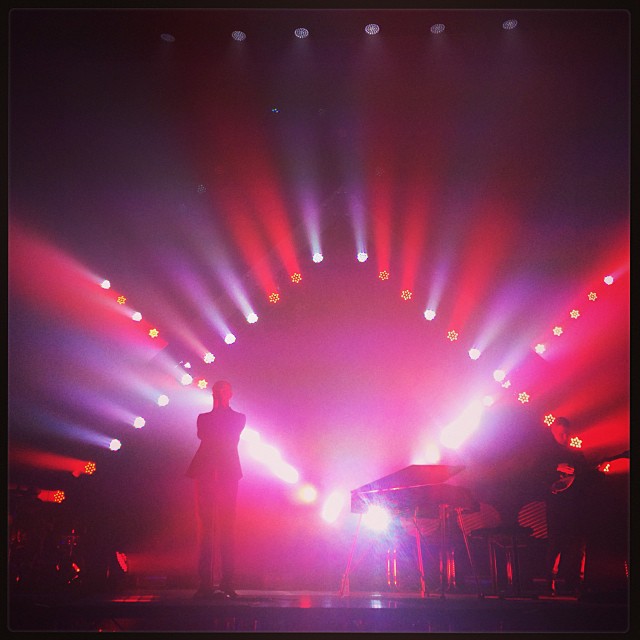Working in a theater or night club often requires a specialized set of technical skills that you might not instantly think about. Sure, the audio system needs to be set up and managed but the lighting system is often actively managed as well. For simple setups, this is usually not too difficult to learn. With more complicated systems you will need to get elbow-deep into some software. With [trackme518]’s latest tool, though, you will only need to be able to edit video.
Sure, this sounds like just trading one piece of software for another, but it’s more likely that professionals working in lighting will already know how to edit video rather than know programming or complicated proprietary lighting software. All you have to do to control a set of lights is to create a video, or use an existing one, and the lighting system will mimic the video on its own. If you do know programming, though, it’s written in Processing Java so changes aren’t too difficult to make.
The software (available on the project’s GitHub page) will also work outside of a professional environment, as well. It’s set up to work with DMX systems as well as LED strips so you could use it to run a large LED display board using only an input video as control. You could even use it to run the display on your guitar.
Photo courtesy of Rob Sinclair (Gribiche) [CC BY-SA 2.0 (https://creativecommons.org/licenses/by-sa/2.0)]
















Following, I need this for my job, LEDs are taking over, I give it 5 years before we stop looking at LCDs for certain sizes.
“but it’s more likely that professionals working in lighting will already know how to edit video rather than know programming or complicated proprietary lighting software.”
Lol, what? A serious lighting professional will absolutely take the time to learn “complicated proprietary” lighting systems, because that’s what everyone uses, and with good reason. This is a neat little project, but doesn’t even come close to providing anything like the capabilities of a real lighting control system.
Also, many lighting control systems actually have pixel mapping features that do this kind of thing built-in, and Avo even integrates it with their media server systems now
Source: I develop complicated DMX-controlled fixtures and have worked with all of the major lighting control platforms and a lot of the minor ones, too.
I second this. Also, while I was at uni we used to come up with custom versions of this software every month using vvvv to do projection mapping combined with pixel mapping, before Avo released their pixel mapper. We even triggered it off an original Rolacue for laughs! I’m not trying to belittle the project, but the statement highlighted in the comment above, plus the plethora of donation links and paid support offers on the project page, is unfortunate..
Hi, I completely agree.
However it is intended more for actual designers – people who design lights as such (shape etc.). It is one thing to design a light or a light scene and another to program it.
From my real life experience it is very rare people with art background can actually program their visions – if you can do it, its perfect than.
Also I second that other software can do it – however I dont know about software that can do it on Raspberry Pi and also is an open source that you can modify for your custom setup (imagine you build your own light strip with custom structure like one one red pixel, second white – you can not setup this fixture in resolume for example). On top of that it is written in Processing – very user friendly, beginner Arduino style IDE.
“From my real life experience it is very rare people with art background can actually program their visions”
That’s why you have Lighting Designers and Lighting Desk Operators/Programmers. I mean it’s not uncommon on small budget shows for the Lighting Designer to do all the desk programming but I’m my experience on larger shows the lighting designer dictates what he wants scene by scene to the desk programmer who translates that into the code necessary for the lighting desk. This is speaking as a tech on musicals, it could be very different for lighting design for band gigs etc.
I think this would be more targeted at very small music venues and mobile DJ type of setups where there may be no lighting guy at all and maybe not even a sound guy in the latter case than where you have a whole team of pros; don’t know it will ever be possible to replace them without some serious AI and even then it would probably be more expensive than just paying some humans..
How is editing a video that is itself a program, not programming?
How is editing a video that is itself a shop, not shopping?
Just in time for even more obnoxious whole-home Christmas light displays.
I have watched their video and all that I have been shown is someone controlling the GUI of the app. Why is there no demo of a light show running on actual hardware? I think we get shown one spot light at the end but other than that, I see a guy controlling a video playing in a GUI… Am I missing something?
Huh. Both the Hackaday project and Github page are 404.
Came across this ~1.5 years after the fact and decided to take a quick peek. Unfortunately, the original links have since been deleted by the author. I found this GitHub branch:
https://github.com/BDB-Studios/PixelMappingDj